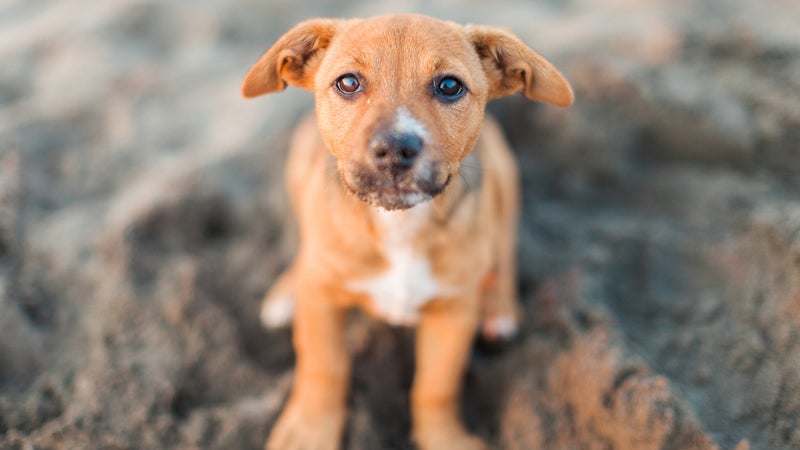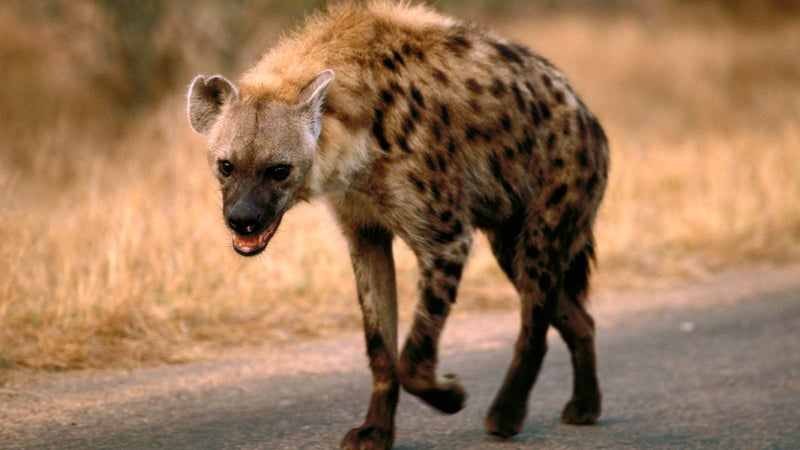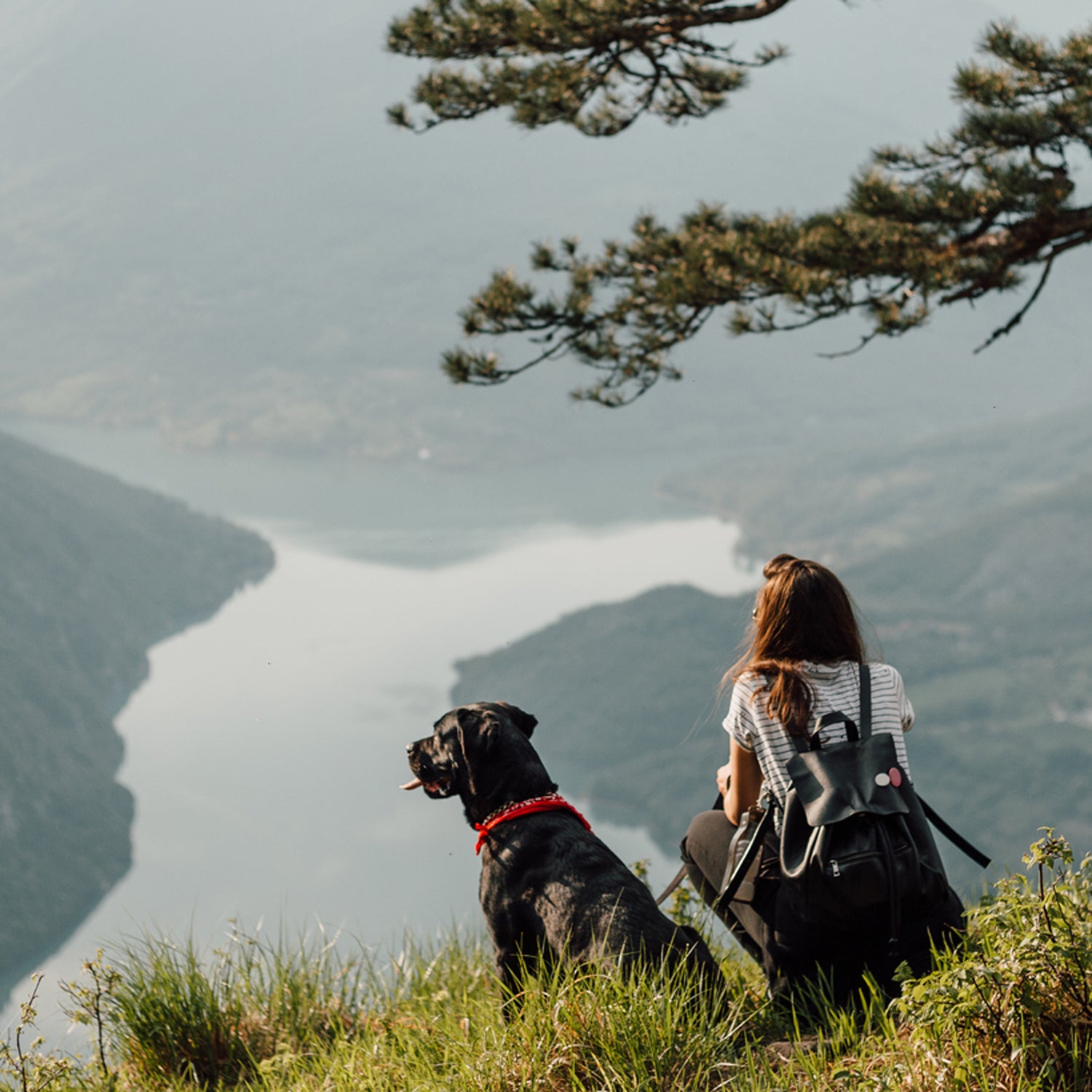This is how you see your trail dog.

This is how non-dog owners see your trail dog.

OK, thatÔÇÖs not even a canid, let alone a canine, but you get the pointÔÇöwe love our trail dogs so unconditionally that╠řwe donÔÇÖt see their flaws. IÔÇÖve had three angelic trail dogs in my life. The first was a purebred English black Labrador, which apparently meant heÔÇÖd been bred to have an outlandishly pure libido. He would hump dogs, cats (yes, we had a trail cat once), and hikerÔÇÖs legs.╠řBut youÔÇÖd never hear me utter anything but: ÔÇťWhoÔÇÖs a good boy?ÔÇŁ╠řThe second perfect trail dog was an intimidating German-shepherd and yellow-Lab mix with blazing speed, an insatiable predisposition for herding, and an anxiety disorder (sheÔÇÖd been abused by a previous owner╠řas a pup.) On the trail, sheÔÇÖd run at╠řother dogs until they got so frustrated that they attacked. That wasnÔÇÖt cool, but, ÔÇťWhoÔÇÖs a good girl?ÔÇŁ╠ř
Before you get your hackles up, I am not anti-dog. My wife and I╠řspoil ours╠řand give them human names like Kramer (the black Lab) and Stella (the herding mutt). Our third dog, Roo, is an Alaskan husky and red cattle-dog mongrel out of Kansas that kills songbirds and squirrels╠řbut is as loving to humans as any therapy poochÔÇöshe waits at our fence each morning to greet passing school kids.╠řLike all our dogs, Roo sleeps in our╠řbed and is allowed on the couch. We walk her daily on trails and give her rawhide treats and rabies shots. After one╠řday at╠řthe creek went awry, we paid real money for the ER to remove a punji stick near her femoral artery. IÔÇÖm a dog lover in a family of dog lovers.
No matter how much we love them, though, our trail dogs are not all that. I think IÔÇÖm a responsible trail-dog owner, but╠řdog owners tend to inflate their ability when it comes to guardianship, just as they ignore the downsides of how they personally╠řbehave╠řon trails. I can admit that now. Can you? The truth can be hard to stomach.
Many dog owners try to justify not picking up poop╠řby referencing the bowel movements of coyotes, bears, and deer. They say that pet waste is natural, that itÔÇÖs fertilizing the backcountry. I used to believe that drivel, too. But dog scheisse is nasty stuff. ItÔÇÖs often chock-full of pathogens, viruses, and parasites that donÔÇÖt belong in the environment. When it rains, that fecal matterÔÇöand the stuff living in itÔÇöenters our streams, rivers, lakes, and oceans. The EPA says that dog waste, like pesticides and chemical fertilizers, is an environmental hazard.
There are 90 million dogs in the U.S. If allowed to shit╠řwhere they might, those hounds would defecate in far greater quantities around population centers than coyotes and bears do. Our nationÔÇÖs dogs produce 10.6 million tons of waste each year. In the Open Space and Mountain Parks land in Boulder County, Colorado, alone, an estimated 30 tons of dog waste is left annually,╠řeven as roughly three-quarters of dog walkers╠řpick up after their pets. We pick up after our dogs (or we should) for the same reasons that we have public sewers. Handling warm crap through a veneer of plastic is disgusting, but seeing the refuse of dozens of dogs melting out of the snow is worse. As dog owners, we have a responsibility not to put parasites into the water that our neighbors recreate in and that wildlife drinks from.
Unfortunately, thereÔÇÖs a trend of late that sees dog owners bagging their dogsÔÇÖ waste╠řbut then leaving it on the side of the trail. As bad as dog mess is, abandoned bags full of it are worse. Even the biodegradable Mutt Mitt plastic will last a year. If you leave a polyethylene bag from the grocery store in the wild, it could last a thousand years. This is happening: in conducted in 2018 by the Leave No Trace╠řCenter for Outdoor Ethics and Penn State University, 73.5 percent╠řÔÇťimmediately picked up their petÔÇÖs waste,ÔÇŁ but that same study found that 13.7 percent ÔÇťdid not take all of the bags with them.ÔÇŁ In Boulder, leaving such bags behind is called a ÔÇťnon-compliant pet defecation event.ÔÇŁ A city councilwoman once proposed that DNA be employed to track down the defecatorÔÇÖs owners, and trail advocates in Colorado recently made a push to end this bad habit. Their slogan, placed on an emoji of a pile of poo, is: ÔÇťYou are what you leave behind.ÔÇŁ Get it?
Even the biodegradable Mutt Mitt plastic will last a year. If you leave a polyethylene bag from the grocery store in the wild, it could last a thousand years.
Shit is but one problem with trail dogs. ThereÔÇÖs also dog-on-dog conflict. We think we know our pooches, but your dog at home on his flannel cushion is not the same beast as your dog in a brawling pack. Take the great to-leash-or-not-to-leash conundrum. If my dog is on a leash and your unleashed dog runs up to it, my sweet Mrs. Fluffy, feeling restrained and cornered, might lunge at your evil Mr. Devildog, fangs exposed. Whose fault is this? ItÔÇÖs hard to ascribe blame. My leashed dog with the PTSD (Stella) snipped at unleashed dogs. Last summer, when we let mellow Roo off the leash, she promptly ran up to a leashed dog to play and got snipped.
I was walking with a five-year-old Kramer off-leash once when a far larger dog sprang from the brush in an ambush attack and pinned him to the ground by his throat. I thought Kramer would die in my hands as I tried to wrest him away. They were both unneutered males. That might have had something to do with it. But who can say? TheyÔÇÖre dogs. They do what they want. These types of interactions can also lead to human conflict, as bites occur when people╠řtry to interfere with the clashing of teeth.
To avoid this dynamic, we could all leash our dogs and rob them and their owners of much joy. Or we could let them run wild under so-called voice and sight╠řcommand and hope for the best. But except for the most highly trained dogs and ownersÔÇörare breeds bothÔÇövoice and sight command is largely bullshit when other dogs are involved. In another Boulder-based study╠ř(from 2011), this one an effort by Open Space and Mountain Parks╠řto certify the compliance of╠řdog owners with the cityÔÇÖs voice and sight rules, conflicts╠řreturned to pre-certification╠řlevels quite quickly.╠řOften╠řevolution trumps training.
And then there are the conflicts between humans and dogs. A buddy of mine once befriended a neighborÔÇÖs dog over the course of a year. When he bent down to pet it one day, it nearly bit his nose off. It took 30 stitches and a fine plastic surgeon to repair it. The dog had a blue tongue,╠řan image my friend canÔÇÖt shake 25 years later. That same guy was once engulfed by a pack of dogs in Ecuador on his bike, one got him in the calf, and 21╠řrabies shots to the belly followed. Intervening in a dog fight in Colorado, another bite sent him back to the hospital. Before you unleash your dog, just assume that it might be charging somebody with that type of traumatic background. Or a person who just got a new hip. Or a kid that your dog outweighs by 70 pounds. As dog owners, we can be impeding someone elseÔÇÖs right to enjoy their day on the trail. The same is true when we let dogs run loose in avalanche terrain or on the nordic track that the local cross-country╠řclub just lovingly groomed. Brown wax is a bummer.╠řLeashed and unleashed dogs can trip up trail runners (a protected class of users). Unruly and dumbÔÇöthatÔÇÖs why we love themÔÇödogs force mountain bikers to decide between canineicide or╠řsuicide. And their barking and scent scare off wildlife before others can view it. Unless, that is, you own a small dog and let it off the leashÔÇöthen you just might see a mountain lion or a golden eagle real close.
I love dogs. Even little dogs. And I would hate to see one picked off like that, just as I would hate to see pups outlawed from our nationÔÇÖs trails. Most dogs and their owners are wonderful. Dogs bring childlike joy and a weird connection to the natural world. Watching Roo run free at our one dog-friendly cross-country-skiing centerÔÇöand playing with the chill cross-country╠řmuttsÔÇöis one of our favorite family outings. Dog owners, too, if you believe the boosterism they cotton to, tend to be more affectionate, nurturing, and outgoing people than non-dog owners. There might even be some truth to that. If so, then we should prove it by controlling our dogs around other users and picking up their waste. That doesnÔÇÖt mean we have to leash them all the time, but we should think about the right time and the right place for them to answer the call of the wild.


